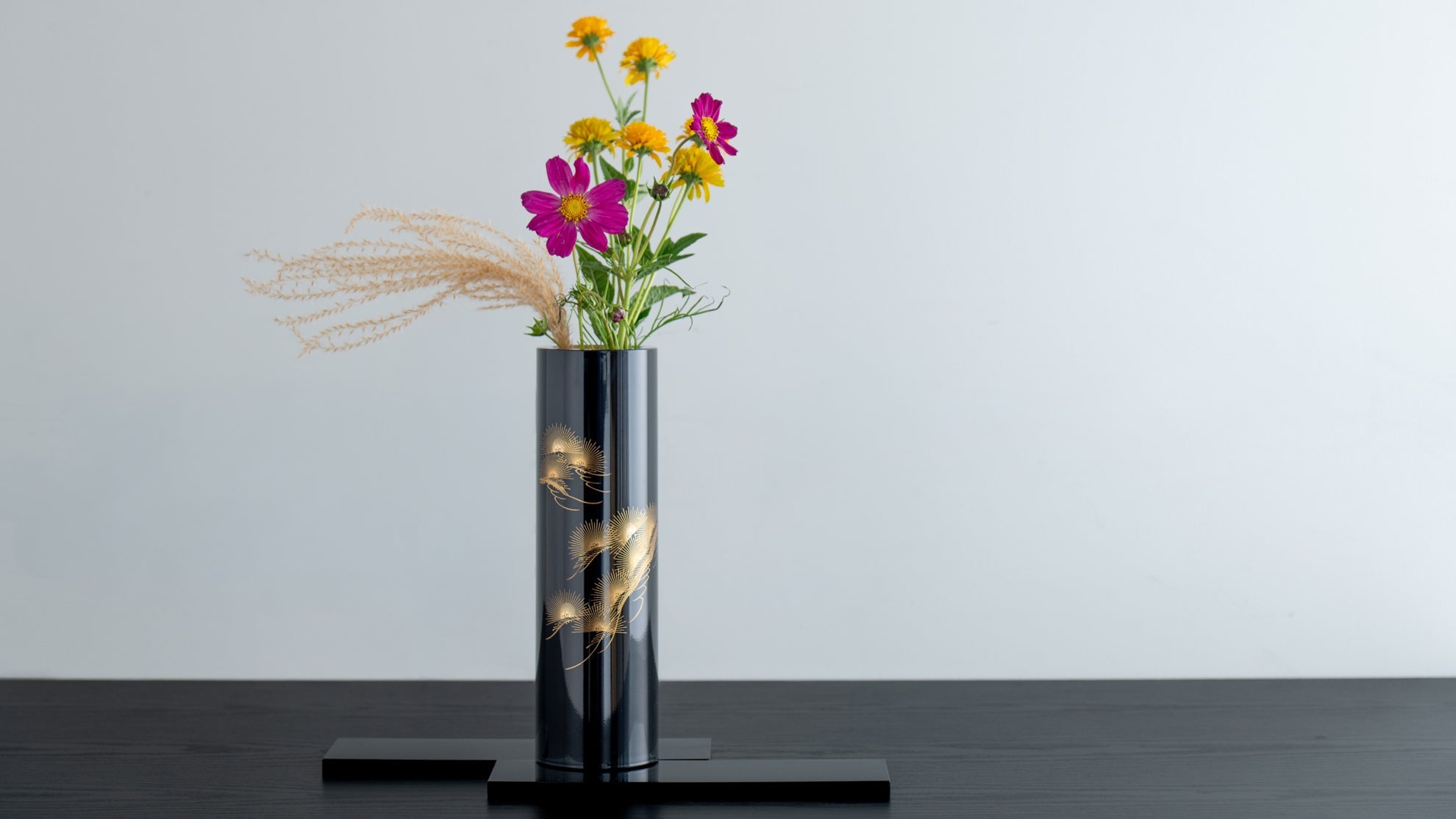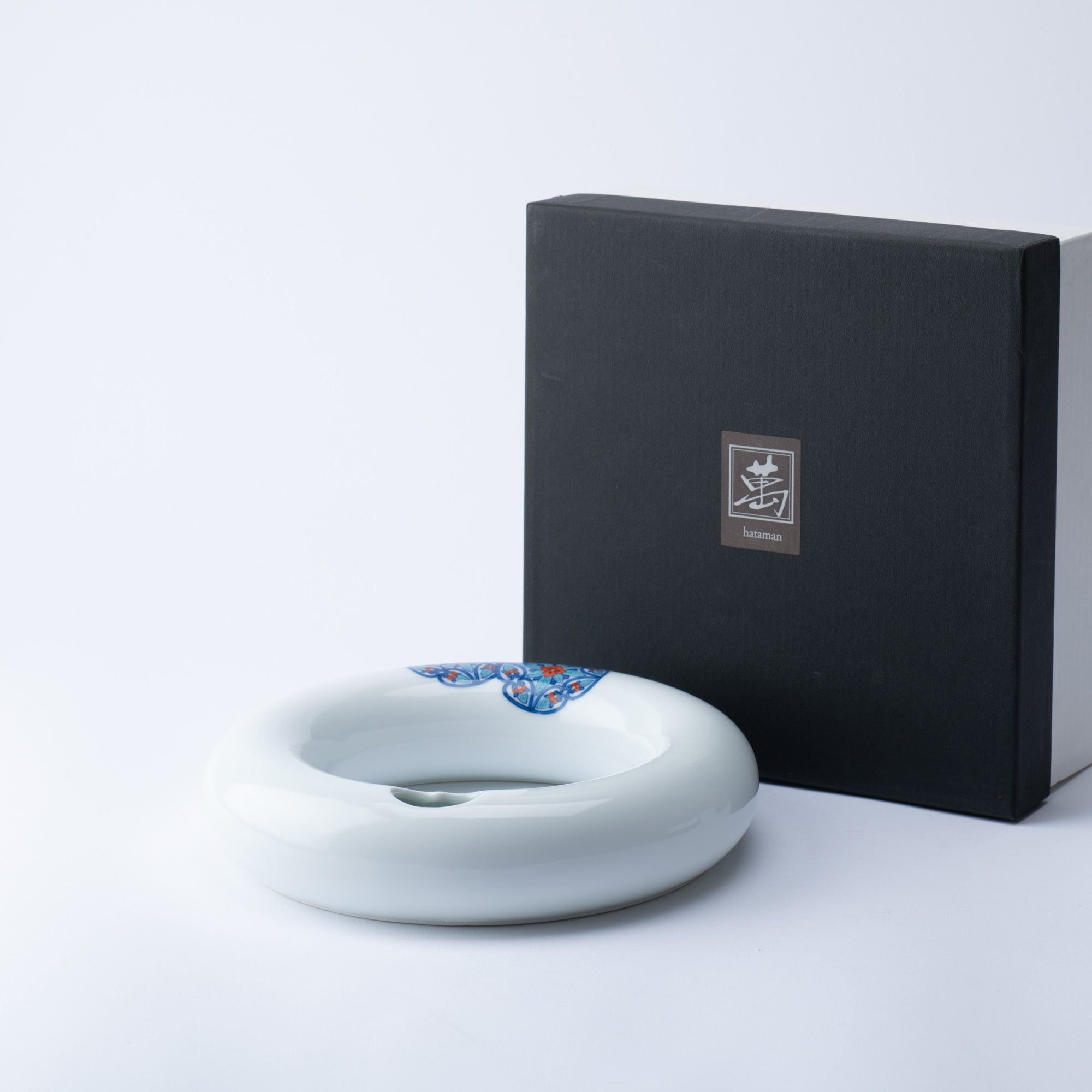
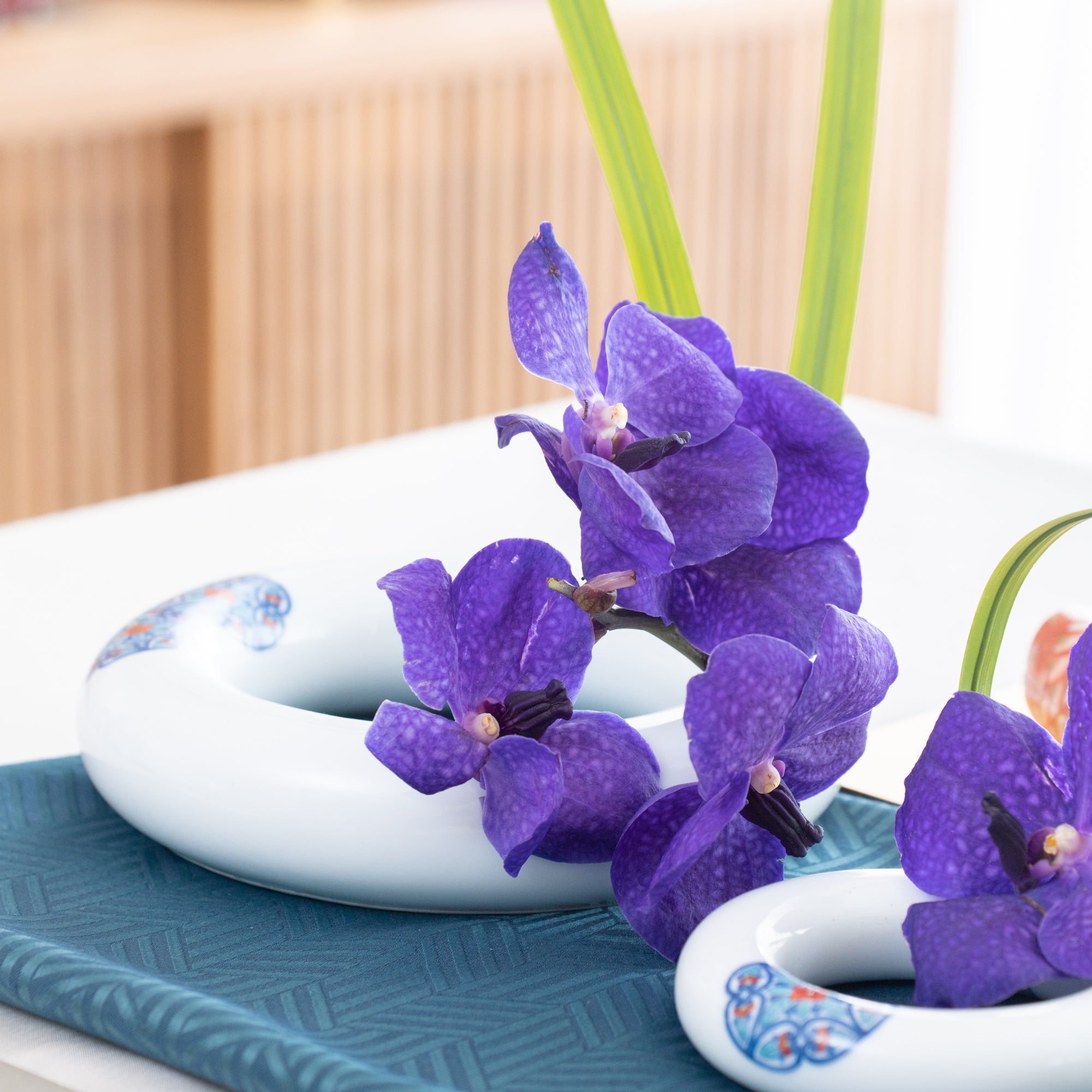
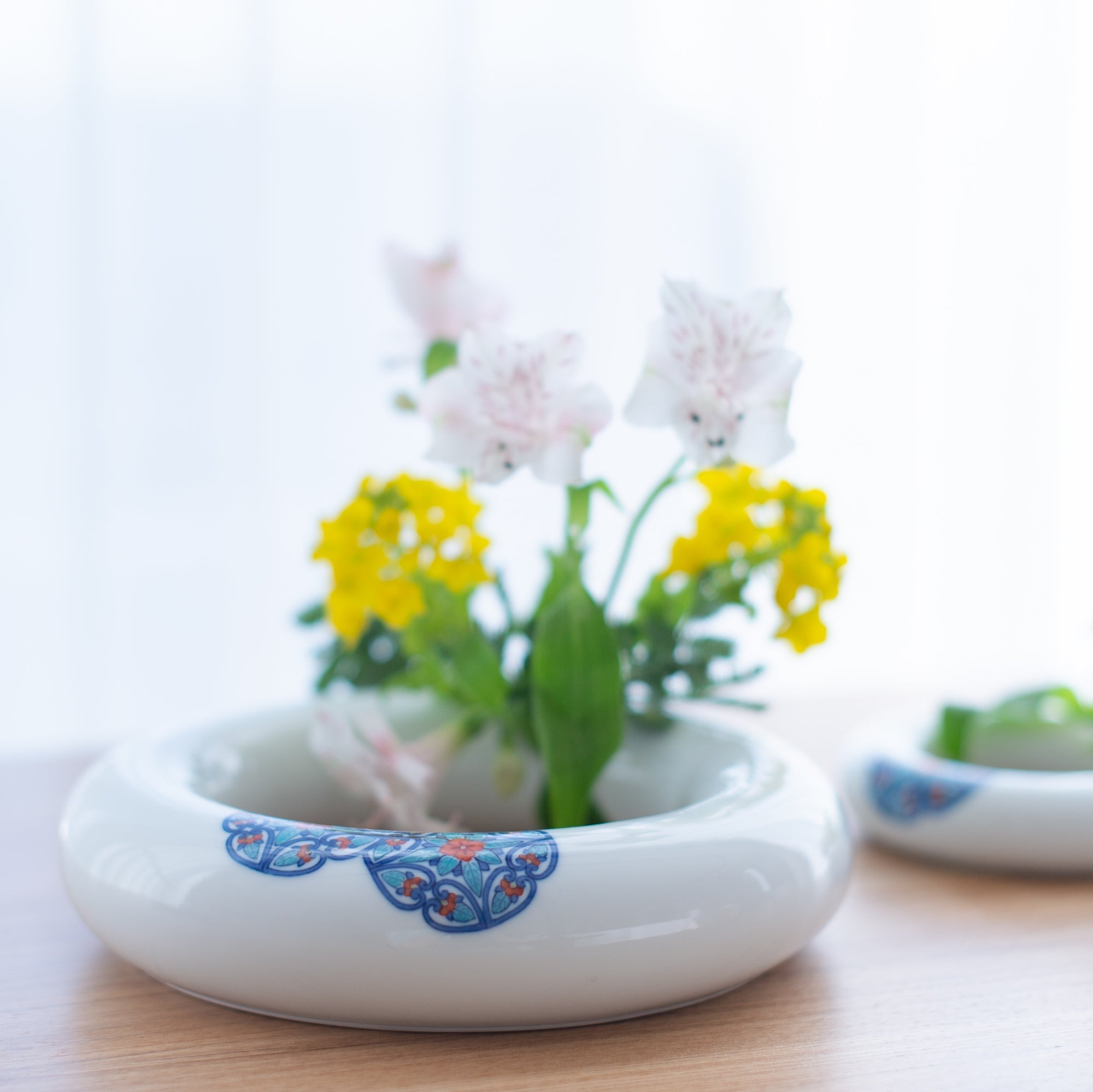
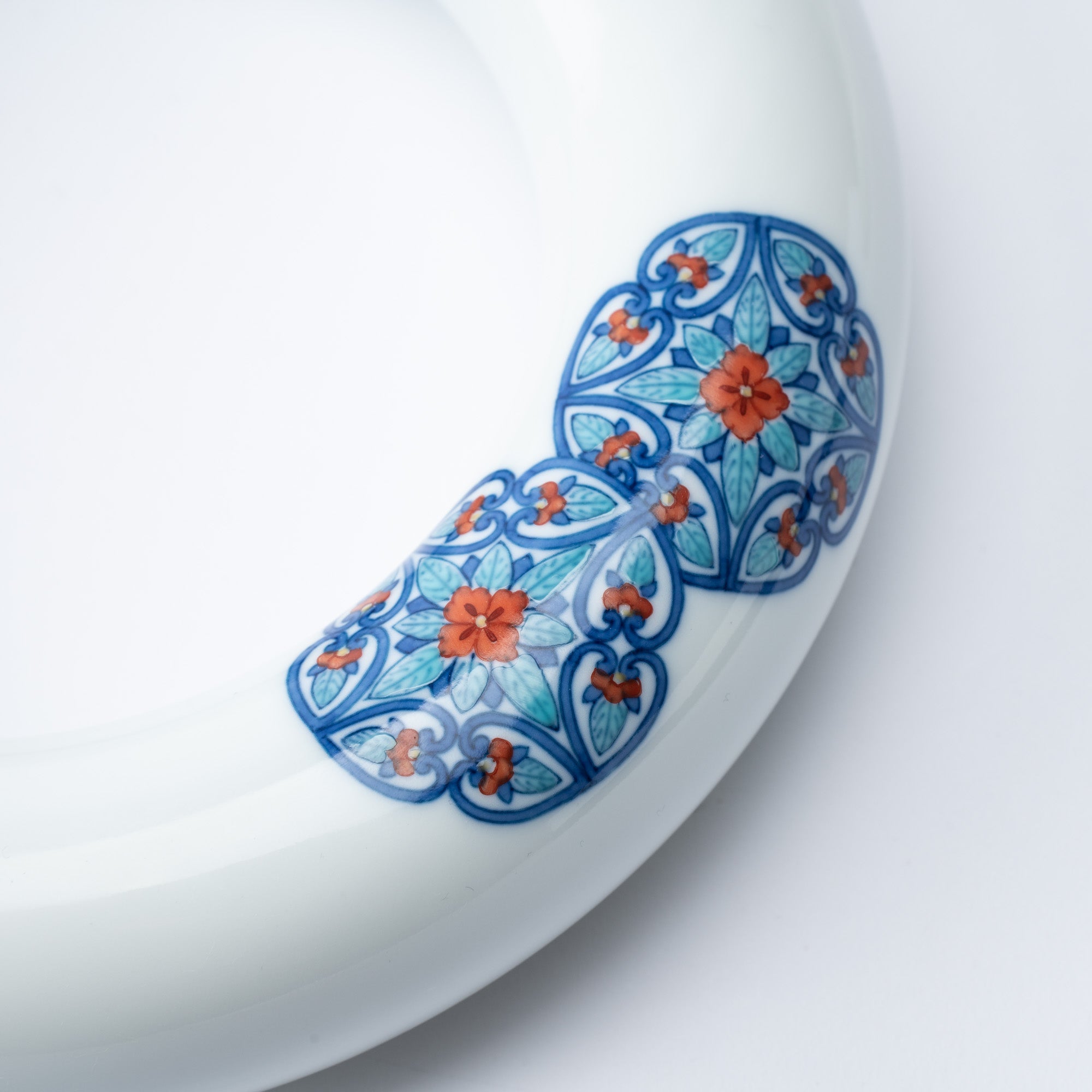
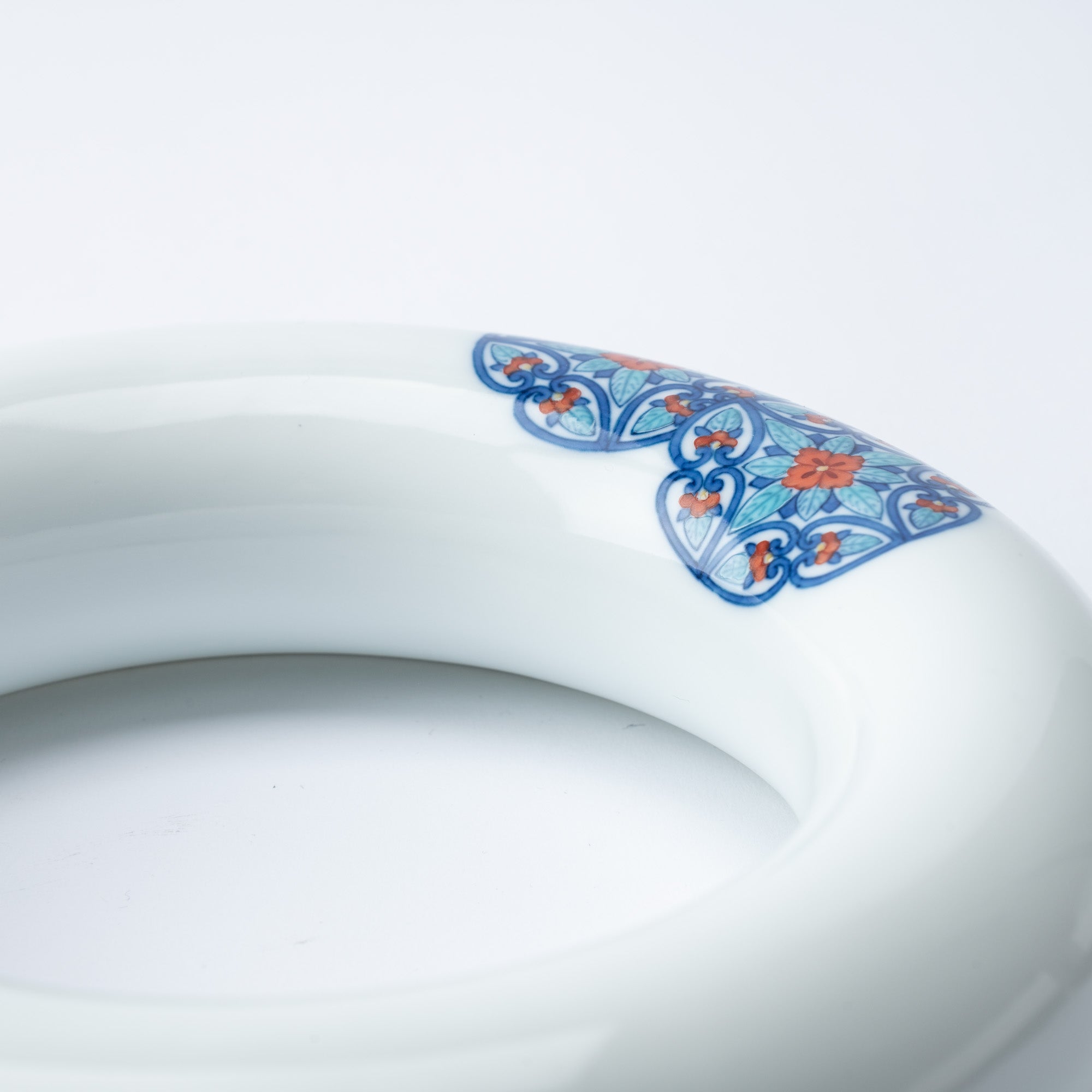
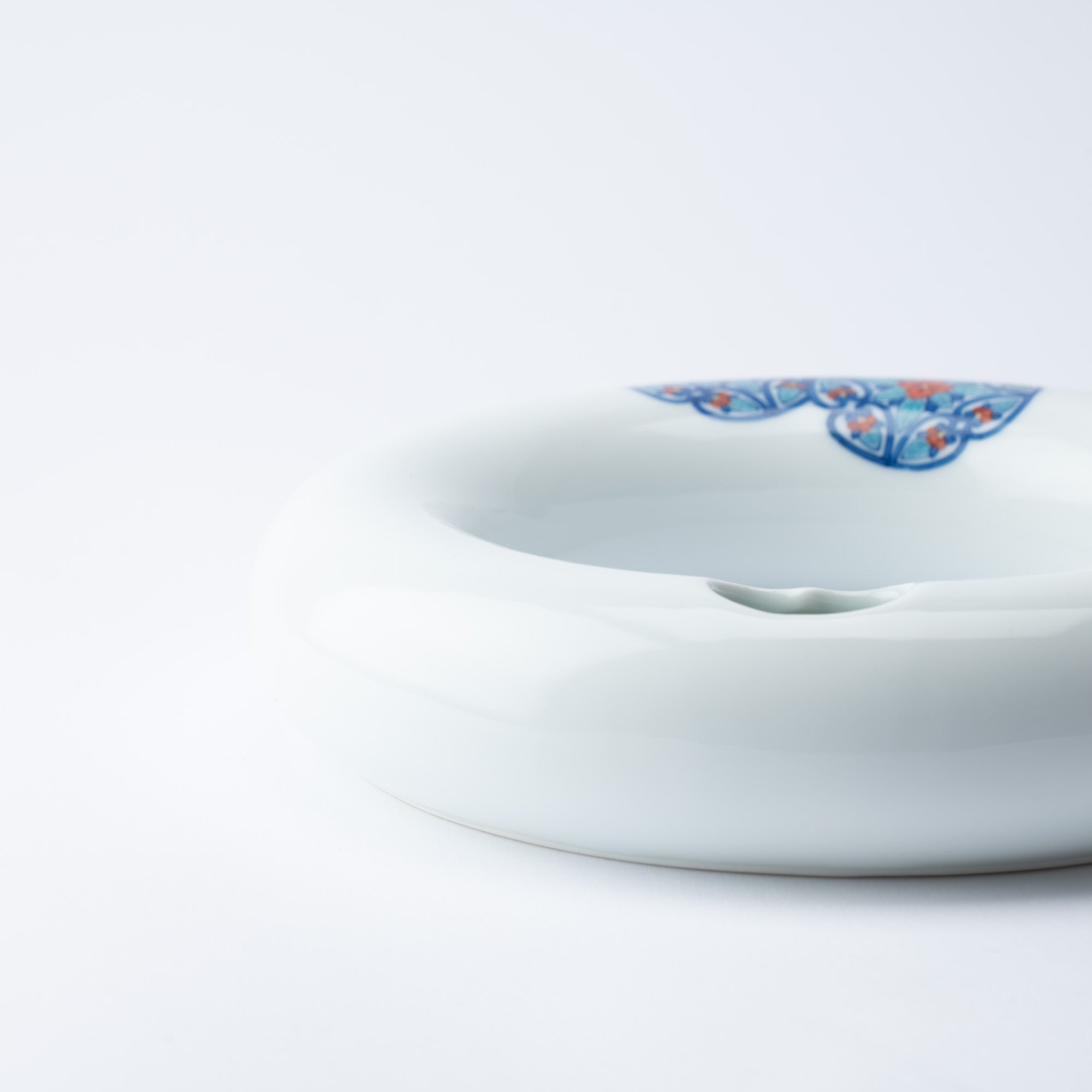
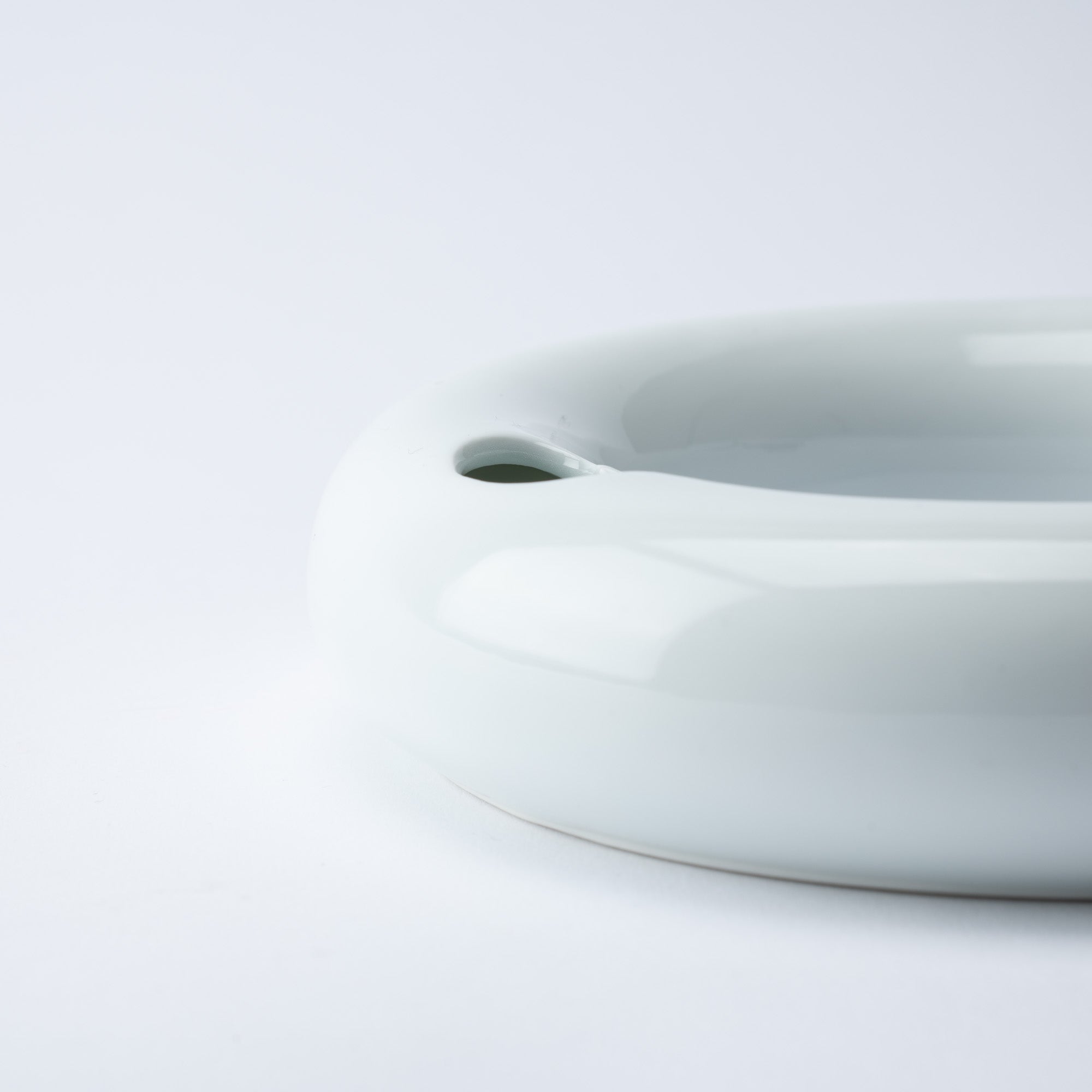
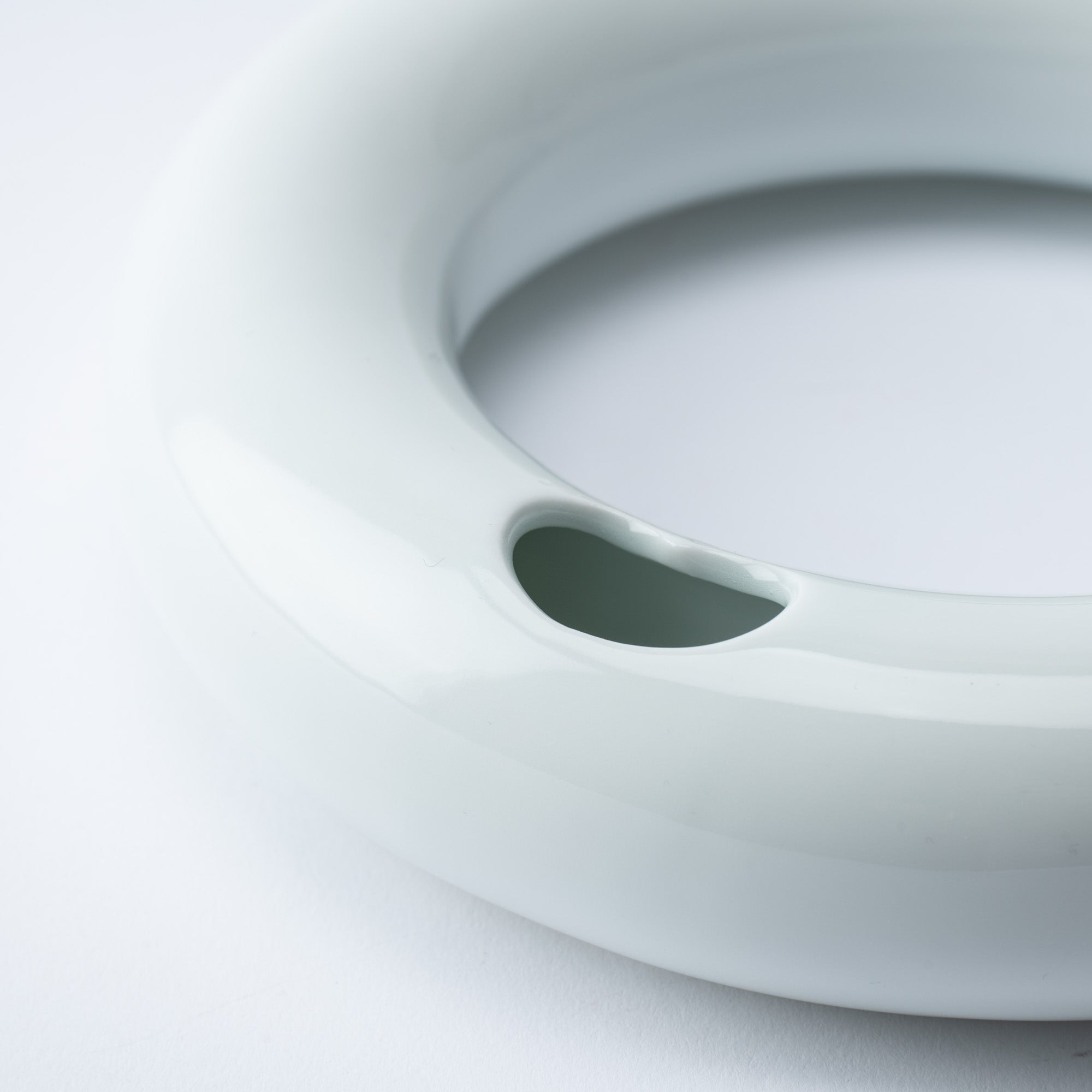
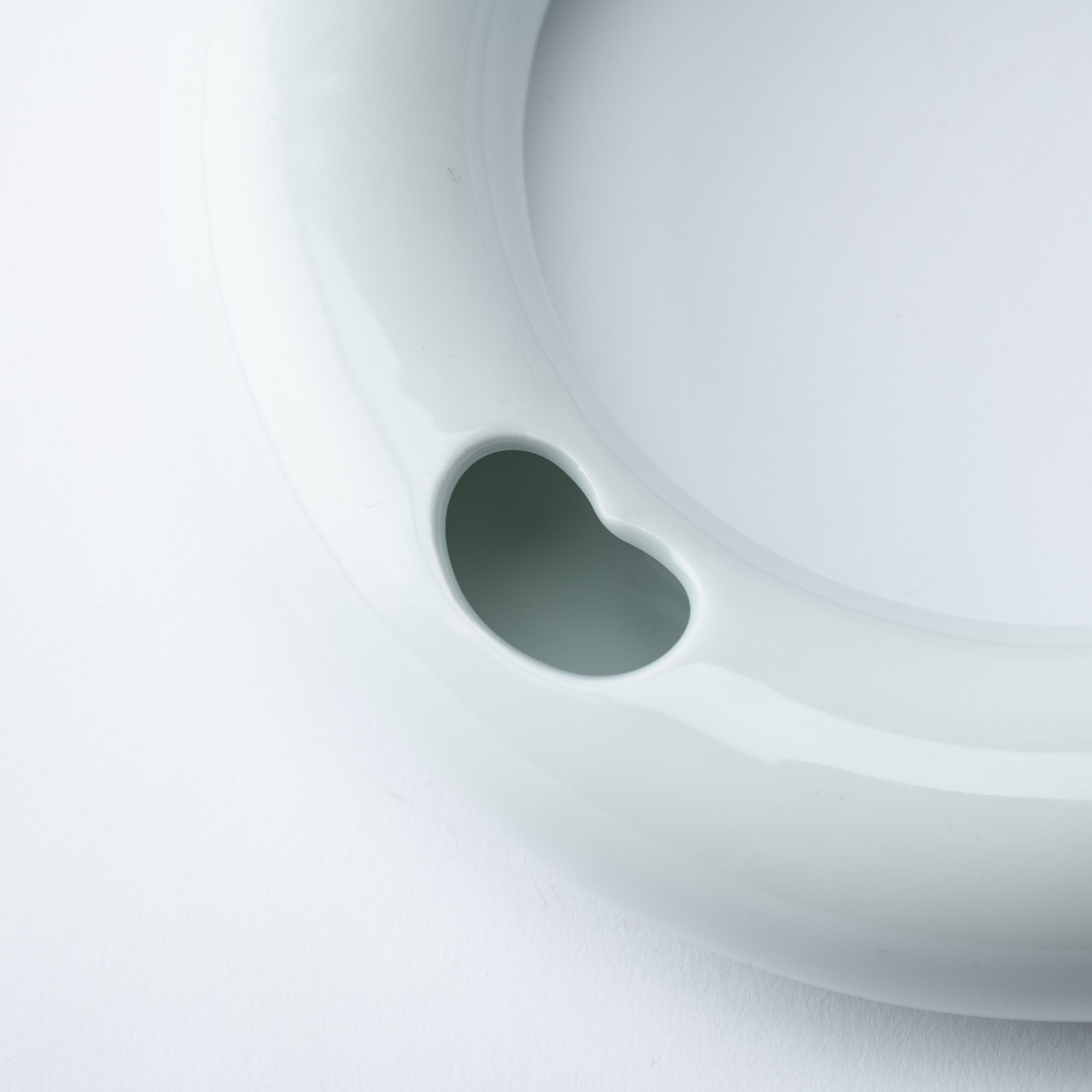
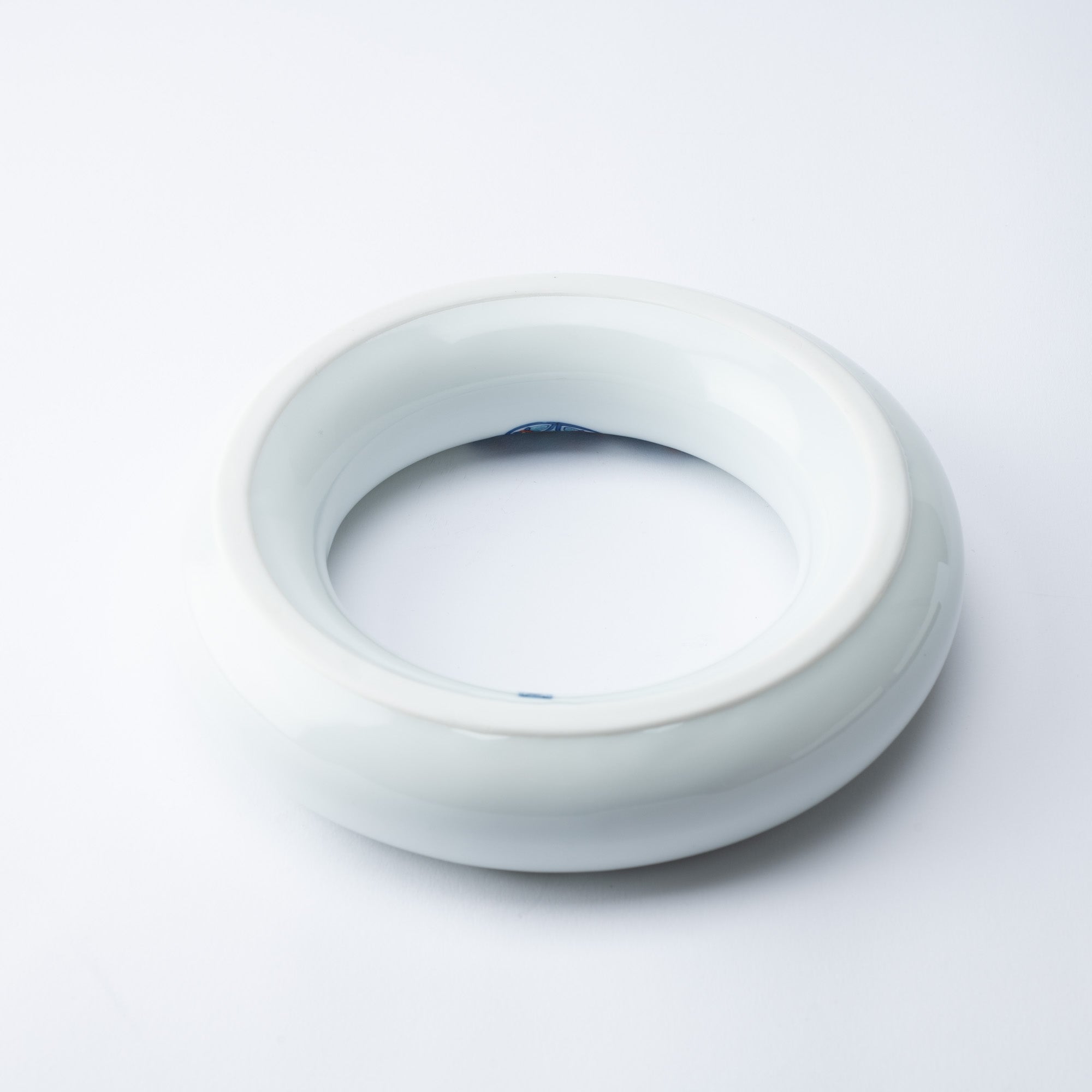
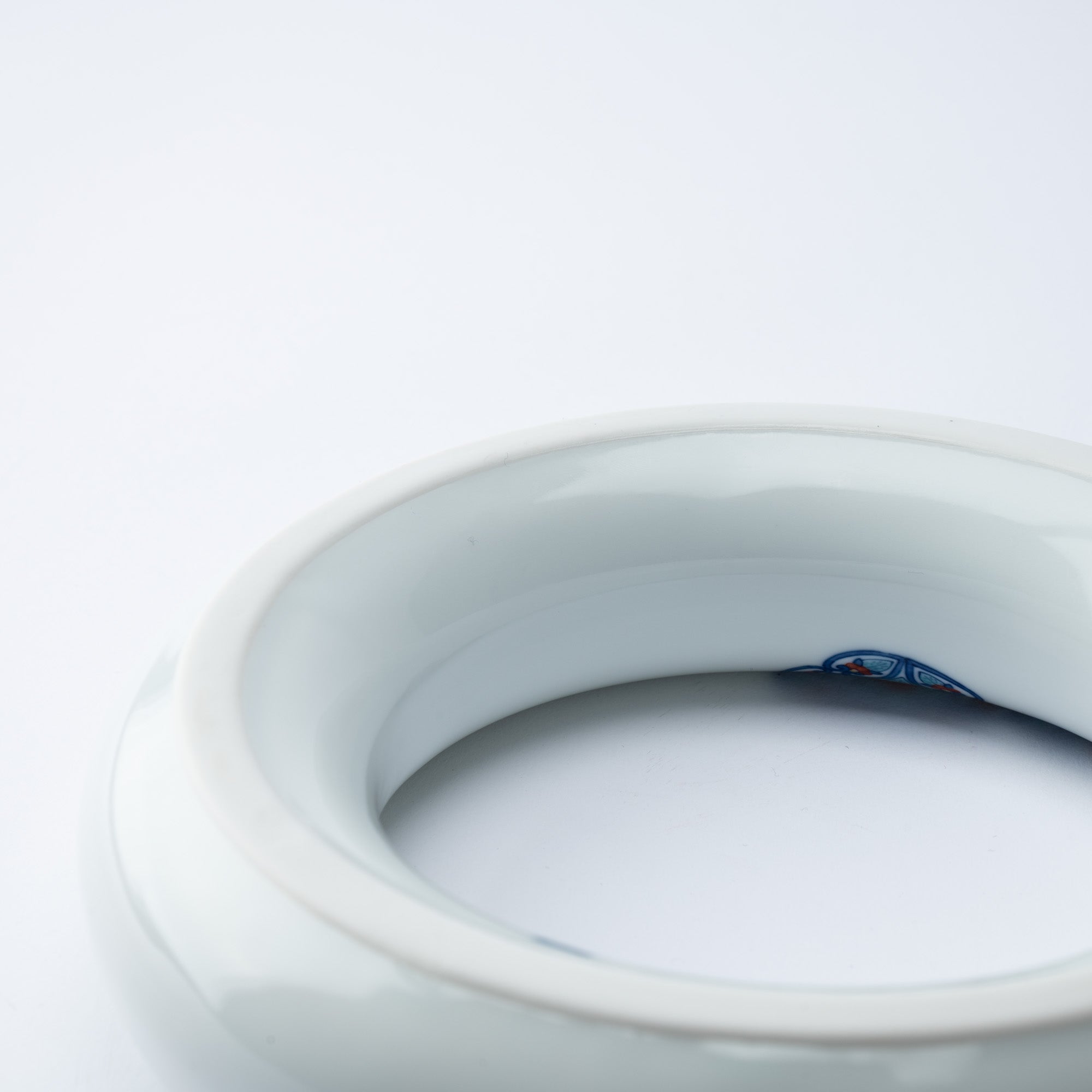
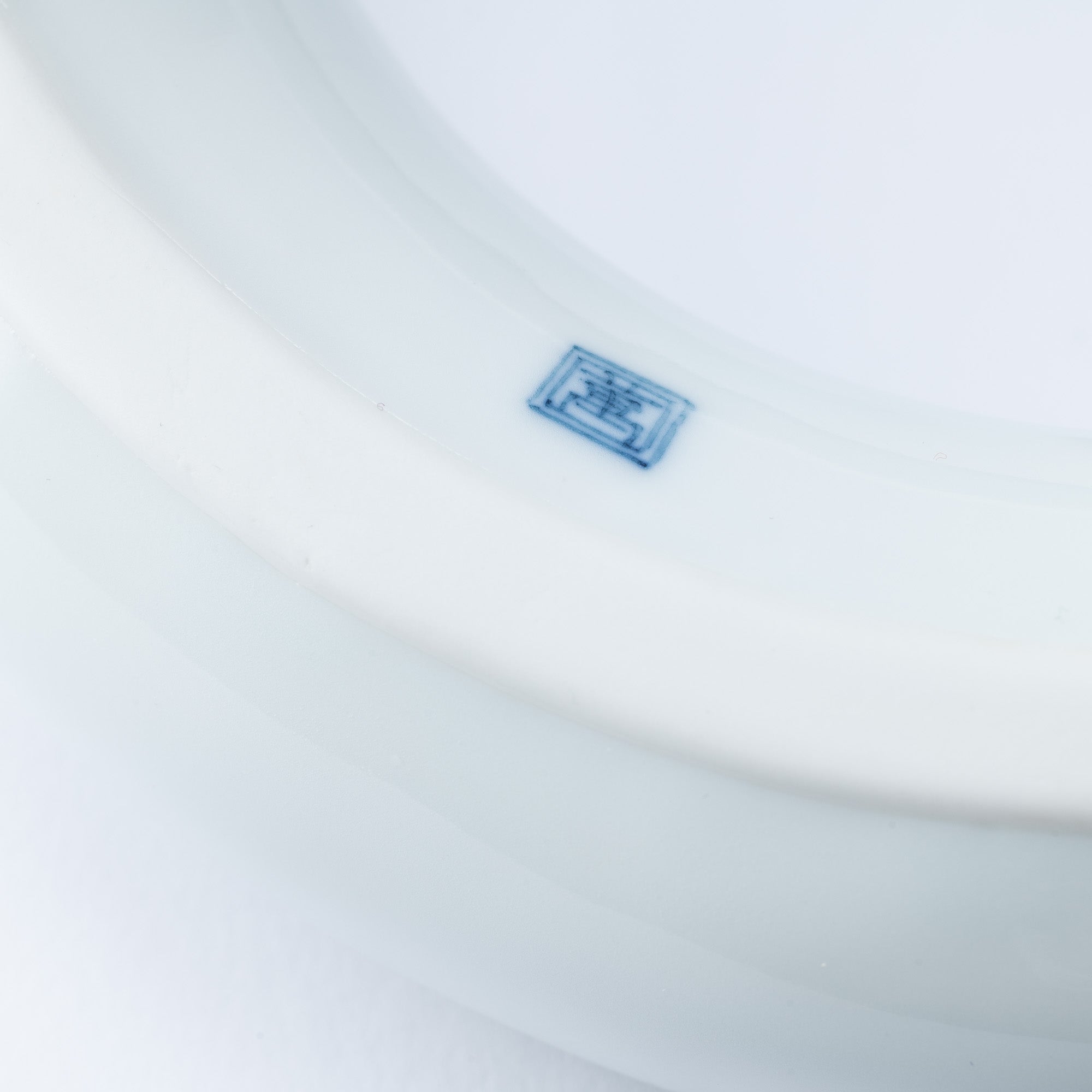
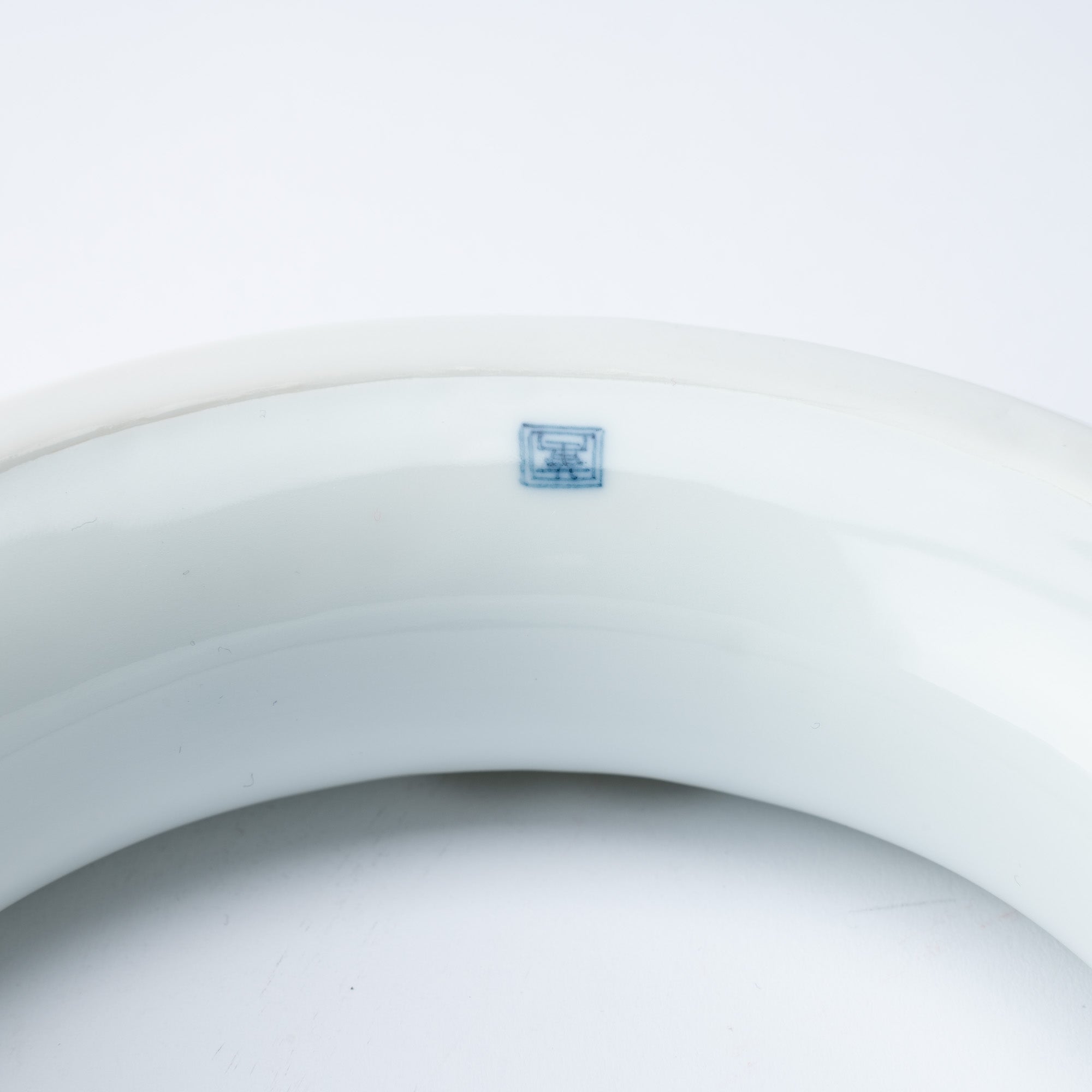
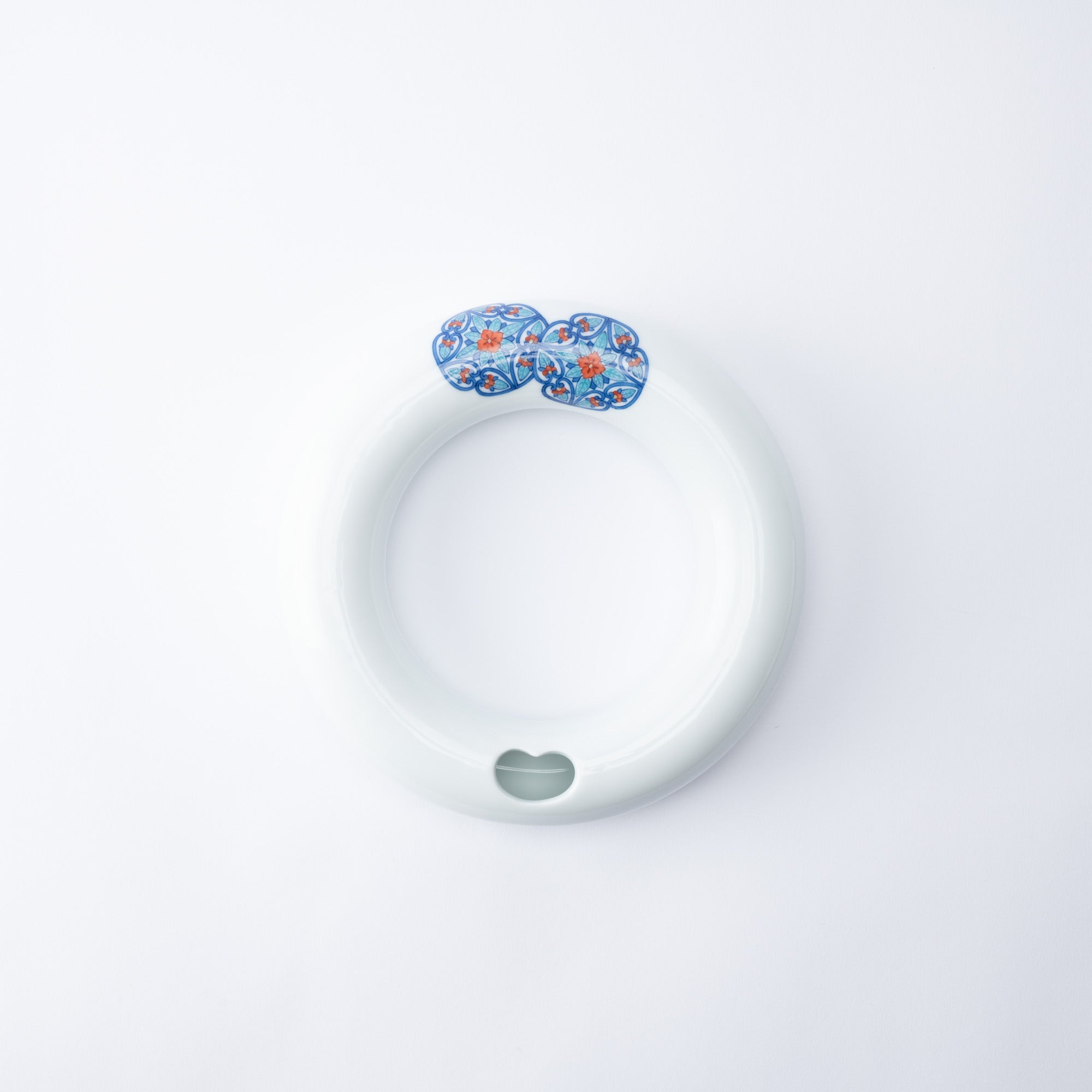
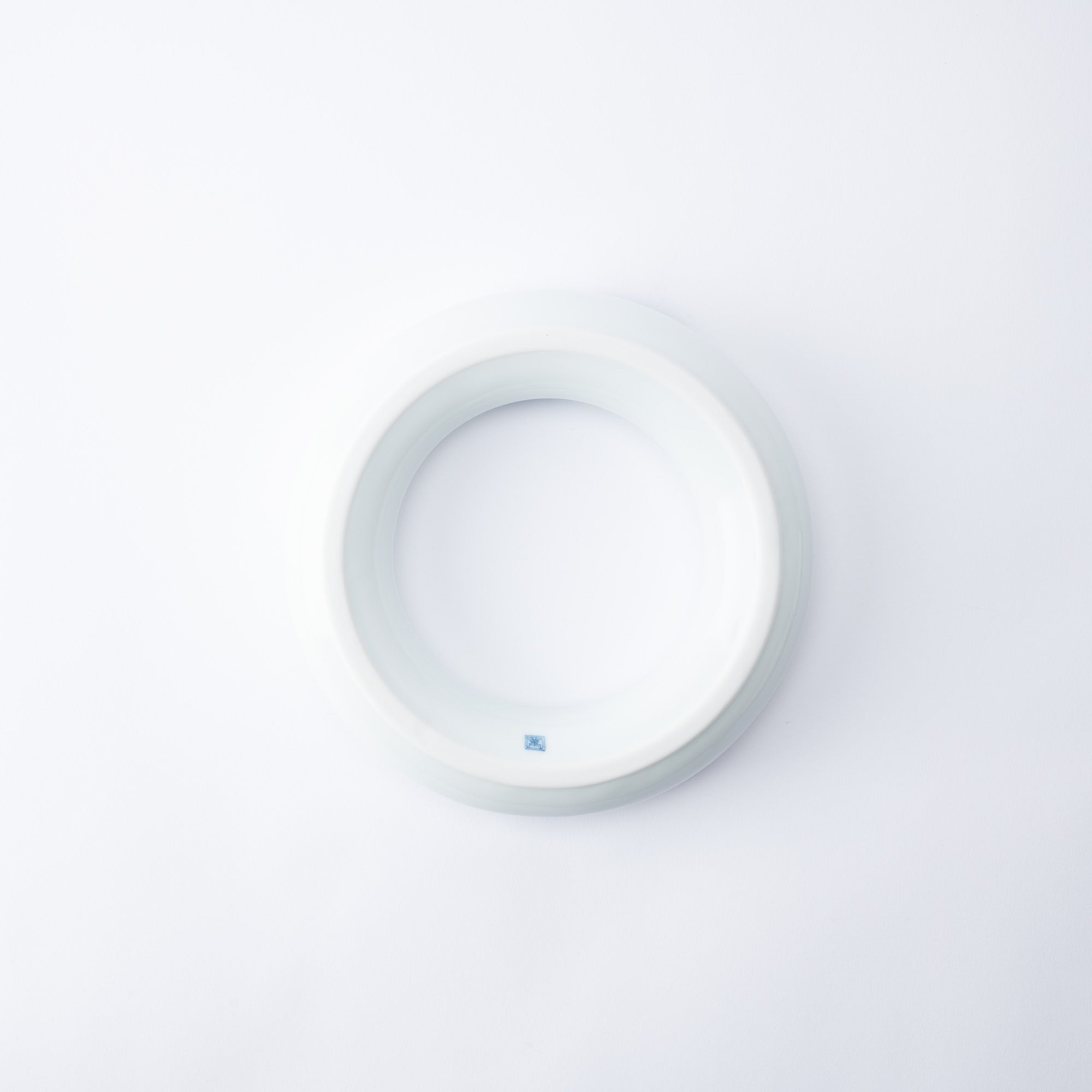
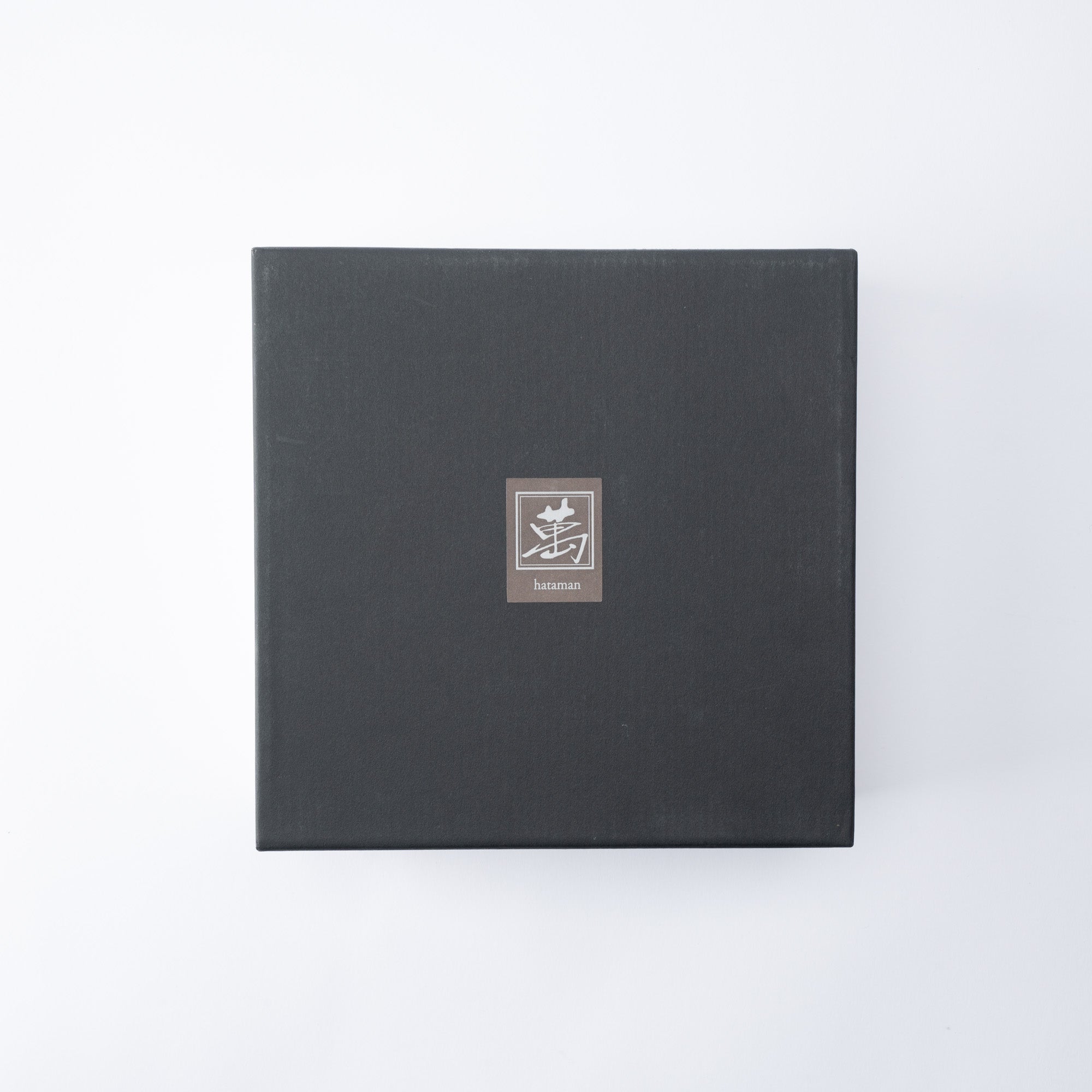
Nabeshima Kaleidoskop-Ring-Blumenvase L
Estimated Shipping Widget will be displayed here!
Diese ringförmige Vase zeigt den Iro-Nabeshima-Stil (farbiges Nabeshima) mit einem Kaleidoskop-Design, einem traditionellen Nabeshima-Muster.
Diese Vase eignet sich perfekt, um Blumen und Kletterpflanzen wie Efeu oder Clematis in Szene zu setzen. Wie auf dem Foto zu sehen, sieht auch die Dekoration mit einer Vanda-Blume mit ihren großen Blütenblättern umwerfend aus.
Alternativ eignet sich die Größe dieser Vase auch dazu, die schönen Blüten dezent neben Grünpflanzen zu arrangieren. Ob Sie sich für klassische Designs oder etwas Ausgefalleneres entscheiden, dieses Gefäß verleiht jedem Raum einen Hauch von Eleganz.
Der Stil von Iro-Nabeshima hat traditionelle Regeln, bestehend aus einer Farbe für Sometsuke (Indigoblau) und drei Farben für auch bekannt (rot, gelb und grün). Nachdem der Umriss in Indigoblau gezeichnet wurde gosu Pigment, Aufglasurmalerei in Rot, kibi (gelb) und moe (Grün) wird als Farbe im Design verwendet. Obwohl es den Anschein erweckt, als würden viele Farben verwendet, werden tatsächlich nur drei verwendet – ein Markenzeichen von Iro-Nabeshima – und seine Schönheit gilt als Höhepunkt japanischen Porzellans.
EINZELHEITEN
| Quantity | 1 |
| Size |
D 19.5 cm (7.7 in) x H 4 cm (1.6 in) Size of opening: 2.8 cm (1.1 in) x 1.7 cm (0.7 in) |
| Material | Porcelain |
| Package Type | Paper box |
| Microwave | No |
| Dishwasher | No |
Hersteller / Marke
Hataman Touen greift die reiche Geschichte und die Techniken der Imari-Nabeshima-Keramik auf, eine 370-jährige Tradition, und verkörpert gleichzeitig den Geist der japanischen Kultur, der Herz und Seele bereichert. Das Unternehmen möchte japanische Ästhetik in einem modernen Kontext verkörpern und seine Geschichte und Produkte mit der Welt teilen.

Kunsthandwerk
Nabeshima-Ware ist eine Porzellanart, die im sorgfältig verwalteten Brennofen der Nabeshima-Domäne hergestellt wird. Dieser Brennofen, ein staatliches Projekt unter der direkten Aufsicht der Saga-Nabeshima-Domäne, erlebte seine Blütezeit in der frühen Edo-Zeit (1603–1868 n. Chr.).
Etwa 250 Jahre lang war Nabeshima-Ware ausschließlich Shogunen und Feudalherren vorbehalten. In den Brennöfen wurden exquisite Stücke in Stilen wie Iro-Nabeshima (Überglasur-Emaille), Ai-Nabeshima (Sometsuke) und Nabeshima seiji (Seladon). Nach dem Ende des Feudalsystems wurden die Brennöfen privatisiert, neue Töpfer wurden aufgenommen und es entstand das, was heute als Imari-Nabeshima-Ware bekannt ist.

Optionen auswählen
















Estimated Shipping Widget will be displayed here!
Blumenvasen
Entdecken Sie unsere sorgfältig zusammengestellte Kollektion authentischer japanischer Blumenvasen. Sie sind in allen Materialien erhältlich, von meisterhaft handbemaltem Porzellan bis hin zu elegantem Glas, und in allen Größen erhältlich, von zarten kleinen Blumenvasen für eine einzelne Blüte bis hin zu großen Kreationen für üppige Blumensträuße.
Diese japanischen Blumenvasen eignen sich perfekt für frische Blüten oder als eigenständige Wohndekoration. Sie bringen Ihre Lieblingsblumen zur Geltung und ergänzen Ihren Einrichtungsstil.
